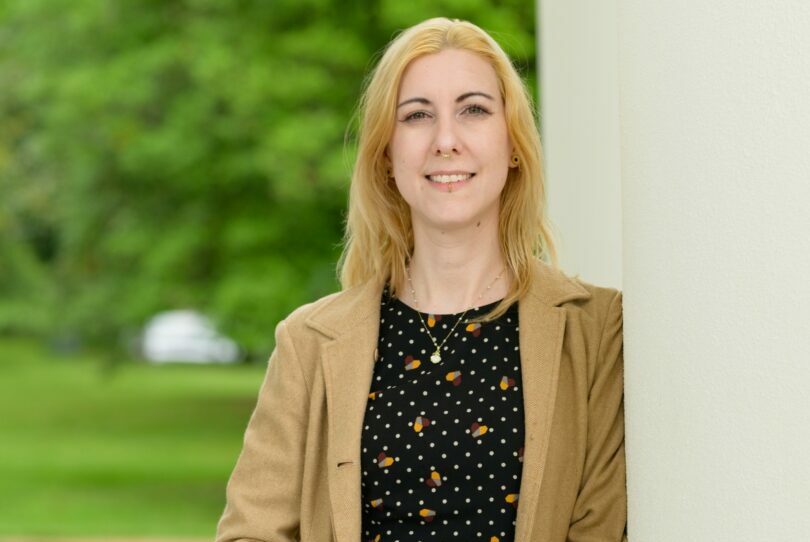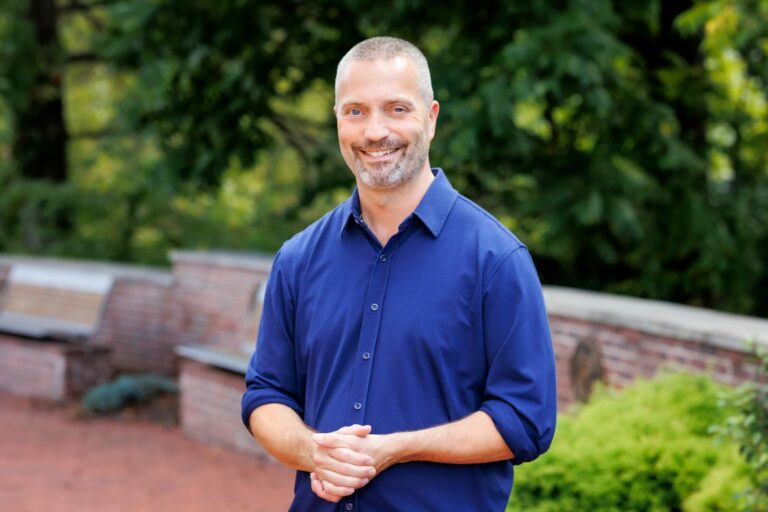We’re excited to introduce you to the always interesting and insightful Wen Xie. We hope you’ll enjoy our conversation with Wen below.
Wen, looking forward to learning from your journey. You’ve got an amazing story and before we dive into that, let’s start with an important building block. Where do you get your work ethic from?
My work ethic is deeply rooted in my belief that design is more than just creating functional or visually appealing products—it’s a responsibility. As designers, we hold the power to influence behavior and shape how people interact with the world. This realization has been the foundation of my design ethics, guiding me to approach every project with care and accountability.
I draw inspiration from the dual nature of design. On one hand, it has the potential to solve problems, improve lives, and foster innovation. On the other hand, if misused or shortsighted, design can lead to unintended harm—whether through encouraging overuse, compromising privacy, or exacerbating environmental challenges. This duality motivates me to anticipate consequences and to prioritize solutions that are not only effective but also ethical and sustainable.
My commitment to design ethics is also informed by principles like speculative design, which encourages envisioning the long-term impact of today’s innovations. By asking “What could go wrong?” and “What does a responsible future look like?”, I strive to create products that empower users without compromising their well-being, safety, or privacy.
For example, in my recent Red Dot-winning logistics platform, I focused on protecting user privacy through data encryption, ensuring that personal information remained secure throughout the delivery process. This wasn’t just about solving a technical challenge—it was about recognizing the societal importance of safeguarding digital trust.
Ultimately, my work ethic comes from a desire to use design as a force for good. Whether I’m tackling issues like digital addiction, environmental impact, or data security, I see my role as a designer as one of stewardship: shaping the digital world in ways that benefit individuals, communities, and future generations.

Great, so let’s take a few minutes and cover your story. What should folks know about you and what you do?
Design has always been more than just a profession for me—it’s a way to shape the world around us, to spark meaningful conversations, and to create a better future. As a digital product designer, I’ve been honored to receive international recognition, including multiple Red Dot and iF Design Awards. But what drives me isn’t the awards themselves; it’s the belief that design holds immense power to address not only functional needs but also societal and ethical challenges.
One of the most defining moments in my career was the recent Red Dot Design Award for a logistics platform I designed. This wasn’t just about streamlining delivery systems—it was about tackling a critical issue: the risk of personal information leakage. I asked myself, “What if privacy was as important as efficiency in logistics?” That question led me to create a system where personal data, such as home addresses, is encrypted under a unique ID. By ensuring that only an AI backend could access this information, I was able to protect user privacy in a way that feels almost invisible yet incredibly impactful. It was a reminder of how design, when guided by ethics, can redefine what’s possible.
At FanDuel, where I currently work as a Senior Product Designer, the challenge is different but no less critical. With the rapid growth of online gambling, I realized early on that I couldn’t just focus on creating an engaging user experience. I had to think about the potential risks—particularly around addiction. This led me to adopt a mindset inspired by responsible gaming principles, designing features that encourage healthier behaviors while still providing an enjoyable platform. It’s not just about gambling; it’s about how we, as designers, can use technology to protect people’s well-being in an increasingly digital world.
Another project close to my heart was my time at L’Oréal, where I worked on addressing the environmental impact of beauty e-commerce. Online shopping has revolutionized convenience but has also created challenges, like the high return rates of beauty products, which lead to unnecessary waste and a significant carbon footprint. By designing an AR try-on feature for YSL Beauty, I gave users the ability to virtually test products before purchasing. This simple but powerful tool significantly reduced return rates, proving that design can play a pivotal role in sustainability while delighting users.
And then there’s my work with NIO, where I helped design the autonomous parking experience for their ET7 smart vehicle. Here, the challenge was trust—how do you make drivers feel confident in handing control over to the car? By integrating real-time visual feedback from LIDAR and HD cameras, I created a system that not only improved safety but also empowered users to trust the technology. It was a project that reinforced my belief that transparency is key to ethical design.
What ties all these experiences together is my commitment to what I call “design with foresight.” Every project begins with a question: What are the long-term consequences of this design? How can I ensure it not only solves today’s problems but also contributes to a better tomorrow? This is why speculative design has become such a central part of my process—it allows me to imagine the possibilities, anticipate the risks, and create solutions that are thoughtful, sustainable, and ethical.
Looking ahead, I’m excited to continue exploring how design can tackle emerging challenges, like digital addiction, the ethical use of AI, and sustainability in new technologies like AR and VR. For me, design isn’t just about making things—it’s about making things better for everyone.

Looking back, what do you think were the three qualities, skills, or areas of knowledge that were most impactful in your journey? What advice do you have for folks who are early in their journey in terms of how they can best develop or improve on these?
Looking back on my journey, I can identify three key qualities and skills that have been most impactful: empathy, critical thinking, and a commitment to lifelong learning. Each of these has shaped not only how I design but also how I approach challenges and opportunities in my career.
Empathy
Empathy is at the core of every successful design. Understanding users’ needs, pain points, and aspirations allows us to create solutions that truly resonate. For me, empathy goes beyond observing behaviors—it’s about actively listening, engaging, and immersing myself in users’ contexts. This quality has been particularly critical when tackling sensitive issues, such as digital addiction or user privacy.
Advice: Cultivate empathy by practicing active listening and engaging with diverse perspectives. Take time to observe and understand users in their real environments. Empathy grows when you step into someone else’s shoes—not just figuratively but through genuine interaction.
Critical Thinking
Design is not just about making things look good; it’s about solving complex problems. Critical thinking has helped me question assumptions, analyze systems, and anticipate the long-term implications of design decisions. For instance, in my Red Dot-winning project, critical thinking was essential to foresee how data encryption could protect user privacy while maintaining logistical efficiency.
Advice: Hone your critical thinking by asking “why” at every stage of a project. Study systems thinking and learn to break down problems into smaller, manageable parts. Seek feedback from peers who can challenge your ideas constructively—it’s one of the best ways to grow.
Lifelong Learning
The design field evolves rapidly, with new tools, trends, and methodologies emerging constantly. Staying curious and committed to learning has allowed me to adapt, whether it’s mastering new design technologies like AR or embracing speculative design principles to future-proof my work. Lifelong learning isn’t just about keeping up—it’s about staying ahead.
Advice: Approach learning as an ongoing process. Read widely—not just design books, but also topics like psychology, technology, and sustainability that intersect with design. Engage in communities, attend workshops, and seek mentorship. The more curious you are, the more opportunities you’ll find to innovate.
For Those Early in Their Journey:
Focus on developing a strong foundation in these three areas. Empathy will connect you to the users you serve, critical thinking will help you solve their challenges effectively, and lifelong learning will keep you growing and relevant in a fast-changing world. Most importantly, be patient with yourself—great designers are not born overnight. They’re shaped by a process of continuous learning, reflection, and practice.

As we end our chat, is there a book you can leave people with that’s been meaningful to you and your development?
One of the most influential books in my career is Speculative Everything by Anthony Dunne and Fiona Raby. This book opened my eyes to a new way of thinking about design—not just as a tool for solving immediate problems, but as a medium for imagining alternative futures. It challenges designers to move beyond functionality and aesthetics, using design to ask deeper “what if” questions about the world we are shaping.
What I find most inspiring is the idea that design can spark critical discussions about the kind of future we want—and, equally important, the futures we want to avoid. By exploring scenarios that may seem improbable or even provocative, speculative design encourages us to reflect on the social, ethical, and cultural impacts of our decisions. This mindset has been instrumental in shaping how I approach my own work.
Speculative Design in Ethical Practice
For me, speculative design is a powerful way to embed ethical considerations into the design process. It provides a framework to look beyond immediate goals and examine the ripple effects of what we create. Instead of simply focusing on how a product works today, it encourages us to ask how it might influence behavior, society, or even the environment in the future.
Take, for example, my recent Red Dot-winning project, where I addressed privacy concerns in logistics. By imagining a future where users’ personal data is fully secure throughout the delivery process, I was able to design a solution that uses encryption to protect sensitive information. Speculative thinking helped me move past industry norms to design a system that challenges how privacy is handled in logistics, paving the way for a more secure future.
Similarly, while designing for the online gambling industry, I used this approach to explore how products could reduce addiction risks instead of merely driving engagement. Instead of seeing user behavior as a set of metrics to optimize, I considered what a responsible and balanced user experience would look like, imagining features that prioritize mental health and well-being.
A Future-Proofing Tool
What Dunne and Raby emphasize—and what resonates most with me—is the idea that speculative design allows us to “future-proof” our work. It’s not about predicting trends or creating utopias; it’s about understanding the possibilities and preparing for them. By exploring alternative futures, we can spot potential risks, encourage innovation, and advocate for designs that align with ethical principles.
In a rapidly evolving world, this kind of forward-thinking design is essential. Speculative design isn’t just about creativity—it’s about responsibility. It reminds us that every design decision carries weight, and by imagining the outcomes of those decisions, we can ensure that the products and systems we create serve not just today’s needs, but also the needs of future generations.
Contact Info:
- Website: https://wenxdesign.com
- Linkedin: https://www.linkedin.com/in/wenxdesign/

Image Credits
Wen Xie
so if you or someone you know deserves recognition please let us know here.




